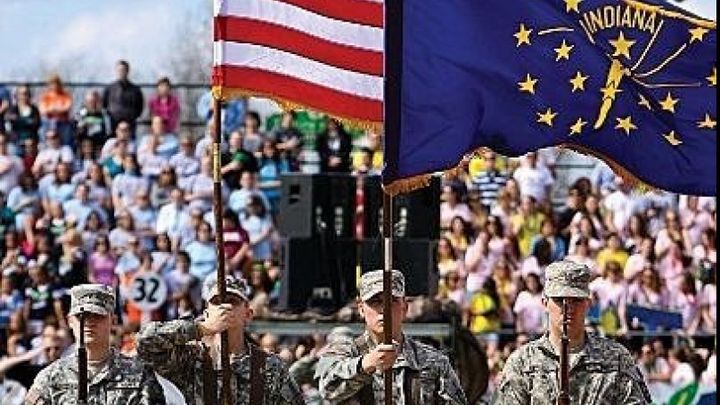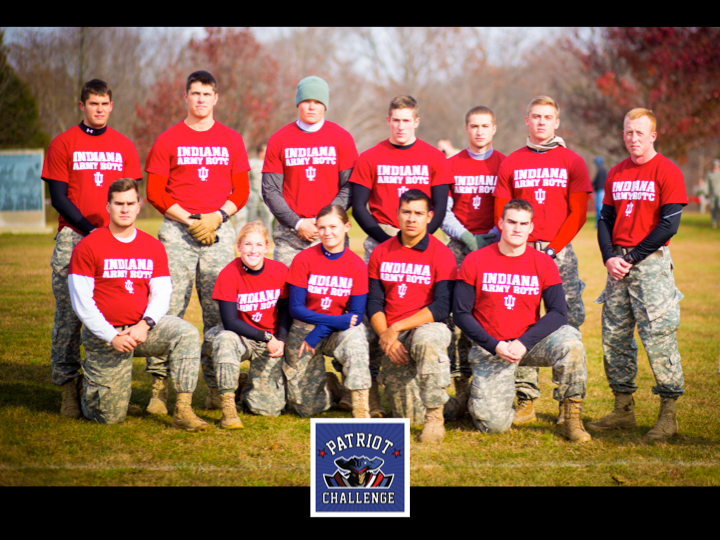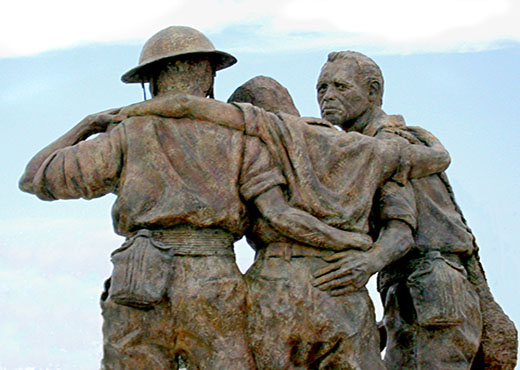
Indiana University ROTC Ranger Co.
Donation protected

Event
Thank you for showing interest in our fundraising event. We are a group of cadets from the Indiana University ROTC handpicked to represent our prestigious program in multiple events and competitions around the nation. A competition that we are particularly interested in doing is a 26.2-mile run called The Bataan Death March . We wish to do this competition in order to represent not only our program but to honor our heroic predecessors that have overcome hardships and have given their lives when needed most. The competition is held in New Mexico and we are asking for donations in order to travel properly, have proper lodging, and accommodate all fees that are associated with the competition
Reward
We believe that with the help of those of you that choose to sponsor us in our endeavor, we will accomplish our goal. We will send a five-person team; each individual will carry an IU flag in honor of our great school. It would be our privilege to send these five flags out to those individuals that will most generously donate to our event. Every member of the 2014-2015 IUROTC RANGER COMPANY will sign the flags with a thank you card attached in recognition to your assistance.

The Bataan Death March History
The Bataan Memorial Death March honors a special group of World War II heroes. These brave soldiers were responsible for the defense of the islands of Luzon, Corregidor and the harbor defense forts of the Philippines.
The conditions they encountered and the aftermath of the battle were unique. They fought in a malaria-infested region, surviving on half or quarter rations with little or no medical help. They fought with outdated equipment and virtually no air power.
On April 9, 1942, tens of thousands of American and Filipino soldiers were surrendered to Japanese forces. The Americans were Army, Army Air Corps, Navy and Marines. Among those seized were members of the 200th Coast Artillery, New Mexico National Guard.
They were marched for days in the scorching heat through the Philippine jungles. Thousands died. Those who survived faced the hardships of a prisoner of war camp. Others were wounded or killed when unmarked enemy ships transporting prisoners of war to Japan were sunk by U.S. air and naval forces.
 Indiana University ROTC History
Indiana University ROTC History
Because so few officers were available during World War I, the Department of Military Science and Tactics assigned Kenneth P. (K.P.) Williams, then a member of the Mathematics Department and a First Lieutenant in the Indiana National Guard, as the first officer to organize the cadets. This earned Williams the distinction of being the “founder of the ROTC” at Indiana University. During Williams’ tenure the War Department temporarily changed the ROTC title to SATC (Students’ Army Training Corps) in 1918, but changed it back to ROTC in January 1919.
During 1918 two divisions were created within the ROTC corps, Collegiate and Vocational. The Collegiate Division, with 900 students, provided a student with $30.00 a month from the government and tuition funding similar to the present- day ROTC. This division consisted of 5 specialty areas: Infantry and Artillery; Air Service; Ordnance and Quartermaster; Engineer, Signal and Chemical Warfare Service; and Motor Transport and Truck Service. The Vocational Division, or “radio detachment”, enrolled 282 students and offered technical training.
Credits
The Bataan Death March
IU Army ROTC
Army ROTC Facebook
The Bataan Memorial Death March honors a special group of World War II heroes. These brave soldiers were responsible for the defense of the islands of Luzon, Corregidor and the harbor defense forts of the Philippines.
The conditions they encountered and the aftermath of the battle were unique. They fought in a malaria-infested region, surviving on half or quarter rations with little or no medical help. They fought with outdated equipment and virtually no air power.
On April 9, 1942, tens of thousands of American and Filipino soldiers were surrendered to Japanese forces. The Americans were Army, Army Air Corps, Navy and Marines. Among those seized were members of the 200th Coast Artillery, New Mexico National Guard.
They were marched for days in the scorching heat through the Philippine jungles. Thousands died. Those who survived faced the hardships of a prisoner of war camp. Others were wounded or killed when unmarked enemy ships transporting prisoners of war to Japan were sunk by U.S. air and naval forces.
 Indiana University ROTC History
Indiana University ROTC HistoryBecause so few officers were available during World War I, the Department of Military Science and Tactics assigned Kenneth P. (K.P.) Williams, then a member of the Mathematics Department and a First Lieutenant in the Indiana National Guard, as the first officer to organize the cadets. This earned Williams the distinction of being the “founder of the ROTC” at Indiana University. During Williams’ tenure the War Department temporarily changed the ROTC title to SATC (Students’ Army Training Corps) in 1918, but changed it back to ROTC in January 1919.
During 1918 two divisions were created within the ROTC corps, Collegiate and Vocational. The Collegiate Division, with 900 students, provided a student with $30.00 a month from the government and tuition funding similar to the present- day ROTC. This division consisted of 5 specialty areas: Infantry and Artillery; Air Service; Ordnance and Quartermaster; Engineer, Signal and Chemical Warfare Service; and Motor Transport and Truck Service. The Vocational Division, or “radio detachment”, enrolled 282 students and offered technical training.
Credits
The Bataan Death March
IU Army ROTC
Army ROTC Facebook
Organizer
Indiana University ROTC
Organizer
Bloomington, IN


